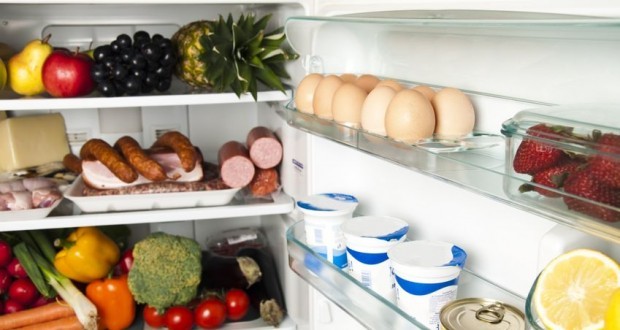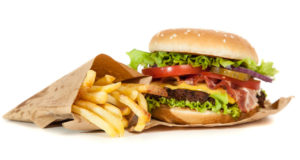Care to guess how much food Americans throw out every year? The answer is probably much larger than you might think. According to the National Resources Defense Council, the average American discards a whopping 25 percent of the food and beverages they purchase. The same organization also concluded that a family of four annually trashes $1,365 to $2,275 worth of grocery store items.
One of the reasons why so much food goes to waste is that it simply goes bad. For example, one telltale sign that a food product has careened past its expiration date is mold. True, not all food molds can be blamed on the consumer; in September 2013, US yogurt producer Chobani issued a recall for moldy shipments of its Greek yogurt. But in most cases, food tends to spoil after it is improperly handled or stored.
The good news is that it’s not too difficult to preserve store-bought foods and beverages. By sticking to some common-sense guidelines, you can prevent your groceries from turning into inedible wastes of money.
Check the Temperature Of Your Freezer and Refrigerator – In order to do their jobs, your freezer and refrigerator need to set at the appropriate temperatures. Specifically, the interior of a freezer should not exceed 0 degrees Fahrenheit (or negative 18 degrees Celsius), whereas a properly functioning fridge should have an internal temperature of 38° F or less (3 °C).
Location, Location, Location – Did you know that the spot where you store a product can determine its shelf life? Take your refrigerator, for example. Placing freshly-bought dairy products on the shelf of your refrigerator door is just asking for trouble. A refrigerator’s door is noticeably warmer than the rest of its interior. Consequentially, items like milk and yogurt can go bad before their sell-by date if they are left on the door’s shelves.
Conversely, some popular foods wither when placed into cold environments. Tomatoes, being a tropical fruit, and ill-suited for refrigerators (yes, tomatoes are not only a fruit, but also hail from the tropics). Another food that shouldn’t be placed in your fridge is potatoes; instead, keep them in a cool and dry area, such as a basement or root cellar.
Finally, various cuts of meat should be stored in the refrigerator’s coldest sections. In other words, they should be placed in the drawers at the bottom of the fridge. This will not only serve to prolong their lifespan, but will also help prevent cross contamination with other foods. By placing meat products on mid or high-level shelves, you run the risk of have meat droppings (in the form of juices or actual meat chunks) land on the food stored beneath it.
Fruits and Veggies – They Don’t Always go Together – In many health-related articles, the terms “fruits” and “vegetables” are often used side by side. The reason for this close relationship is that both fruits and vegetables are two of the biggest cornerstones for a healthy diet. While placing the two terms together in a sentence is certainly appropriate, this shouldn’t be taken to mean that veggies and fruits blend seamlessly together inside your kitchen.
Some of the most popular fruits at the grocery store, such as bananas, apples and pears, release ethylene gas as they age. The small amounts of gas released by these fruits aren’t harmful to people, but the same can’t be said for veggies and other kinds of fruit. Carrots, leafy greens and berries can easily absorb this errant ethylene gas, causing them to become overripe and spoiled.
Carefully Organize Your Pantry – Have you ever come across a packaged product in the pantry that is long past its prime? It’s easy to buy a box of cereal or package of cookies, and then forget about it as newer products are shoved to the pantry. Needless to say, it’s probably not a good idea to eat packaged foods that are many months old.
To prevent boxes of food from collecting dust on pantry shelves, try reorganizing the contents of your pantry so that the oldest items are front and center. The newest purchases should be sent to the back.
Make Good Use of Plastic/Glass Containers – At first glance, you might wonder why it would be necessary to fill up glass and plastic containers with rice, pastas and grains. After all, doesn’t the product packaging do this job for you? Well, yes, that would be correct, but the problem is that such packaging can allow insects to seep into your groceries.
The boxes used to hold rice, pasta and other grains are held together with glue. As unpleasant as it may sound, insects can feast on this glue, providing them with both food and access into the box’s contents. This isn’t a problem with glass and plastic containers – insects aren’t interested in eating glass or plastic, and even if they were, they wouldn’t be able to chew through such materials.
Shop Smartly – It’s never a good idea to go shopping on an empty stomach. Doing so puts you at risk of making decisions with your stomach, and not with your head. As a result, you might end up with stockpiles of food you really don’t need.
Think Outside the Box – Food that’s getting long in the tooth isn’t necessary destined for the trash bin. With a little creative thinking, you can still make something out of older foods before they go bad. Vegetables that begin to get soggy, for instance, can be used in soup broths, whereas bread that is starting to harden can be grounded into bread crumbs or croutons.
 Natural Knowledge 24/7 Educate yourself with nutrition, health and fitness knowledge.
Natural Knowledge 24/7 Educate yourself with nutrition, health and fitness knowledge.






